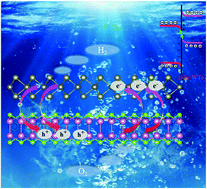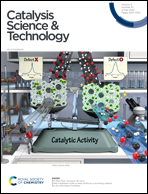Direct Z-scheme WTe2/InSe van der Waals heterostructure for overall water splitting†
Abstract
Z-scheme van der Waals (vdW) heterostructure photocatalysts for overall water splitting have drawn significant attention due to their strong redox ability and efficient separation of photogenerated electrons and holes. Here, by using first-principles calculations, we predicted that the transfer of photogenerated electrons and holes in the WTe2/InSe vdW heterostructure follows the Z-scheme pathway instead of type-II. It is highlighted that the WTe2/InSe vdW heterostructure is an indirect bandgap semiconductor with high lattice dynamical and thermodynamic stability. Interestingly, the built-in electric field at the interface can effectively separate photogenerated carriers. The suitable band edge positions of the WTe2/InSe vdW heterostructure can provide sufficient driving force for photoinduced carriers to participate in water redox reaction. More importantly, the Te-vacancies in WTe2/InSe can significantly lower the overpotential of the hydrogen evolution reaction (HER). Under light irradiation, both HER and oxygen evolution reaction (OER) can spontaneously occur on the surface of the WTe2/InSe vdW heterostructure when pH > 7. These results provide new prospects for designing efficient InSe-based Z-scheme vdW heterostructure photocatalysts.



 Please wait while we load your content...
Please wait while we load your content...